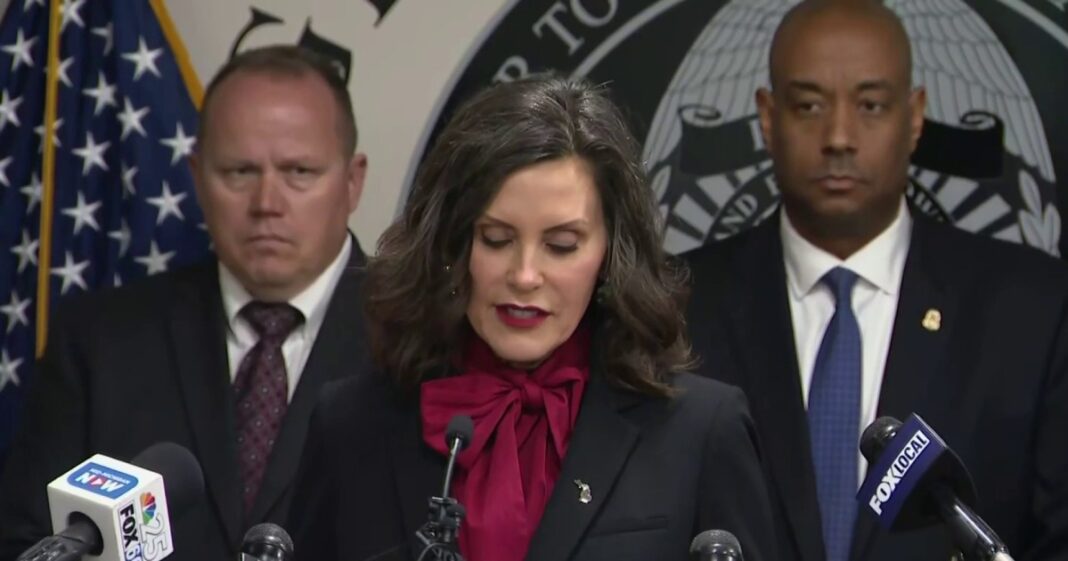The Ongoing Issue of Gun Violence: A Reflection on Recent Tragedies
In recent years, the frequency of mass shootings in the United States has become alarmingly prevalent. Tragic incidents have occurred in schools, supermarkets, and even places of worship, leading many to question the safety of communal spaces. As public anxiety grows, the need for understanding and addressing the root causes of gun violence has never been more urgent.
The Aftermath of the Michigan Church Shooting
On September 29, 2025, a particularly horrific event unfolded in Grand Blanc Township, Michigan. A gunman drove a vehicle through the doors of a Church of Jesus Christ of Latter-day Saints, subsequently opening fire on those inside. The attack resulted in at least four fatalities and left eight others injured. Michigan Governor Gretchen Whitmer held a press conference shortly after, expressing her heartbreak over the event and reflecting on the pervasive issue of gun violence in the state. She poignantly noted that residents have witnessed shootings across various venues in recent years, from schools to stores to places of worship.
Whitmer’s remarks shed light on the intensity of the current climate regarding public safety. She urged citizens to “lower the temperature of rhetoric” surrounding such events, advocating for a more compassionate and understanding dialogue during these challenging times.
The Emotional Toll on Communities
Every shooting resonates beyond the immediate victims; it sends shockwaves through communities. The emotional fallout is profound, as families grapple with loss, while survivors must cope with trauma. The psychological effects can linger for years, not only for those directly involved but also for witnesses and even those who hear about the incident from afar.
The pain felt by families of victims is compounded by relentless media coverage, creating what some describe as a “trauma echo,” where the initial shock reverberates through the community over and over again every time the story is retold.
A Nationwide Epidemic
The Michigan church attack is not an isolated incident; it is part of a broader trend of mass shootings that have plagued the nation. Data from various studies indicate a steady rise in gun violence, leading to increased calls for legislative change. Activists and community leaders are highlighting not just the need for stricter gun control laws, but also the importance of mental health resources and support systems to prevent potential shooters from acting violently.
Recent statistics reveal that young people are becoming more involved in these incidents, bringing the issue of youth mental health into sharper focus. Addressing mental health in conjunction with gun control may offer a dual approach to mitigating the risk of future violence.
The Role of Law Enforcement
In situations of immediate danger, law enforcement’s role is crucial. Responding quickly can mean the difference between life and death. However, it’s also vital to analyze how police departments handle such situations beyond the emergency response phase. There are discussions surrounding systemic changes within law enforcement, including training focused on active shooter scenarios and enhanced community policing efforts.
Additionally, police transparency in the aftermath of these incidents can bolster trust between law enforcement and the communities they serve. Many communities are advocating for better communication and collaboration with police forces to foster trust and ensure safety for all residents.
Legislative Challenges
Despite widespread public support for stricter gun legislation, progress remains slow. Legislative grids lock in place as lawmakers navigate a complex landscape of lobbying, public opinion, and political pressure. While some states are taking measures to tighten controls on gun access, the overall national landscape remains fragmented.
Proposals for universal background checks and limitations on high-capacity magazines are continuously debated. The challenge lies not just in crafting effective laws, but in overcoming the cultural divisions that complicate the conversation around gun rights versus gun control.
Conclusion
In light of the recent church shooting in Michigan and similar incidents across the country, the discourse around gun violence is more critical than ever. The discussion involves a wide array of stakeholders, including government officials, mental health professionals, activists, and community members. Balancing individual rights with the collective need for safety remains a contentious issue, but one that demands ongoing dialogue and action.
This isn’t merely a policy problem; it’s a human one that speaks to the heart of societal values and the kind of communities we wish to create for future generations. As we navigate these waters, the importance of empathy, understanding, and collaborative efforts can pave the way for sustained change.



